Phoebe, my little foster mama, is a car-chaser, and, unfortunately, we have a perfect property for her to practice her passion. I live on a roughly square two-acre parcel situated at the corner of two rural roads, so fully half of our property line is fenced and parallel to a road. This makes it fun for Phoebe to chase passing cars on either road – whose drivers are probably oblivious to her as she speeds, barking, down the fence line – but especially fulfilling when one slows and turns the corner, traversing both roadside fence lines before disappearing down the road out of sight.
When dogs engage in behaviors we don’t like, the solution is always (at least) two-pronged: You need to both teach the dog what you would prefer that they do in the given situation (mostly by reinforcing a behavior that’s incompatible with the behavior you don’t want), and you need to prevent them from being reinforced for doing the behavior you don’t want.
In this case, that means keeping Phoebe from being able to chase the cars, by keeping her on a leash any time she’s not locked up. Car-chasing, like chasing squirrels, cats, shadows, bicycles, joggers, or anything else that moves, is highly reinforcing for some dogs. Chasing is part of the “predatory sequence” that is encoded in every dog’s DNA. The full sequence is defined by ethologists as ORIENT > EYE > STALK > CHASE > GRAB-BITE > KILL-BITE > DISSECT > CONSUME. Some dogs barely display even a single part of this sequence, but the selective breeding we’ve done over millenia has resulted in some breeds that display specific parts of this sequence quite strongly. The herding breeds are masters of the orient, eye, stalk, and chase parts; dogs who go on to do more than nip at the animals they are supposed to be herding tend to get culled from the population. Protection dog breeds have been bred to excel at the grab/bite phase of the sequence, and, again, get culled if they go farther than that. But certain hunting dogs, such as those who are used to hunt for wild pigs and bears, are prized for their abilities to kill their prey.
Whatever genetic inheritance Phoebe possesses, the chasing bit clearly fills her with adrenaline and endorphins. Fortunately for me – or more specifically, my free-range chickens – she doesn’t seem to have any tendencies toward the grab/bite or any further part of the sequence.
I’ve mostly been preventing Phoebe’s opportunity to chase cars by keeping her contained in a 10-foot by 10-foot pen with her five puppies. But they are now 6-plus weeks old and she is rapidly tiring of their demands to nurse. They don’t need to nurse anymore. They are eating canned and soaked dry food several times a day, and even munching on dry kibble between meals. I equipped the pen with second doghouse on a raised platform so she could escape the pups when she needed a break; at this point, she spends virtually all of her time in the pen up there, out of their reach.
But the arrangement won’t last long. The gang of puppies just mastered the stairs to the deck on the back of my house. Until a few days ago, when I let them out of their pen to play on the lawn, I could run up those stairs so they would stop following me and biting my ankles. Now, they gleefully bound up the stairs after me; it won’t be long before they can get up on Phoebe’s platform. When that happens, she’ll have to go back to the shelter to start the next part of her journey: getting treatment for her heartworm infection, getting spayed, and getting adopted.
Teaching an incompatible behavior
The second important part of getting rid of the car-chasing behavior is teaching the dog (through reinforcement) an incompatible behavior. I’ve been working hard on teaching Phoebe one very simple behavior that is incompatible with car-chasing: coming when called. I won’t review all the steps for that here, but will instead just point you toward past in-depth articles that teach this important behavior.
“Daily Practice Makes for Perfect Recalls”
She’s doing much better already; it helps that she’s extremely motivated by yummy treats (having been starved before she came to the shelter and also from the demands of nursing). I can already call her back to me when I see her hear an oncoming car and she rises to her feet before launching her charge. If I fail to notice her noticing the oncoming car, however, and she starts her run before I call, she’ll still come back to me about half of the time, which is 50% better than she was three weeks ago. I’m hoping by the time she has to go back to the shelter, we’ll have a solid recall off of cars at least 80% or more of the time.


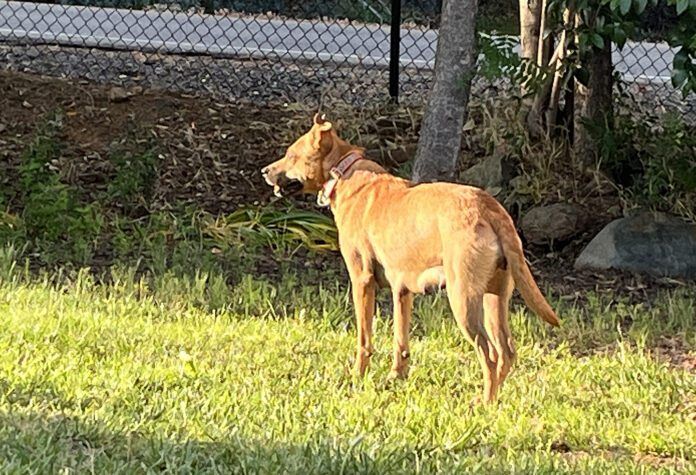
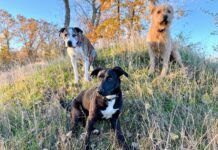
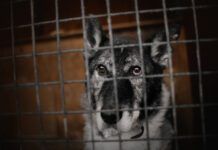
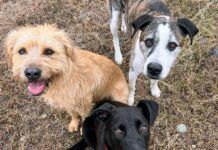
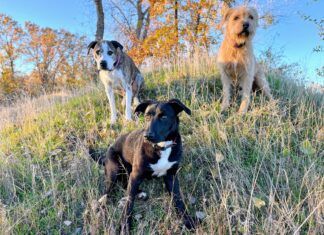
I’ve got this problem with Diana pawPrints. Only not cars. She runs along the perimeter of my front yard fence and barks at pedestrians. While she is very food motivated, she isn’t interested in any treats I might give her, no matter how high value, to come away. Only after the pedestrians have moved on will she then return to me. This is only in my yard. Outside walking on leash or off leash in the dog part she is the friendliest, well behaved dog. It is only in our yard, her territory, that she does this. I understand her guarding and warning as she is part GSD dog. It is both annoying and not, as I really do want visitors to the neighborhood to know I have a large dog that is possessive of it’s yard, just to deter the possible casing by would-be thieves. Yes, it is that kind of neighborhood. I do have double gates so she is barred from the front yard unless I am with her.
Freyja does run but is silent. Just not a barker, which is interesting as she is over 50% husky. I guess the running is the 12% border collie.